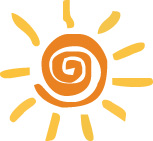(English) Nutrient infusions
- Home
- (English) Nutrient infusions
أحدث المقالات
- Local Hyperthermia as a major tool in treating Cancer patients successfully in a non-toxic way
- (English) Why are IQ scores declining over the previous 20 years?
- (English) Expert report regarding the clinical use of CBD
- CBD effective in Healing Bone Fractures at all Ages and Prevention and Cure of Osteoporosis and Arthrosis
- (English) Medical Cannabis Approval Sweeps Across Europe
- (English) More people die from overdosing on pharmaceutical drugs than illegal drugs
- (English) Flu vaccine BOMBSHELL: 630% more “aerosolized flu virus particles” emitted by people who received flu shots… flu vaccines actually SPREAD the flu


 English
English Deutsch
Deutsch Nederlands
Nederlands Turkish
Turkish Russian
Russian Italiano
Italiano Français
Français Português
Português